INProgress Partners
January / February 2023
SMACNA and SMART take young people from high school to highly paid with rewarding careers in sheet metal...

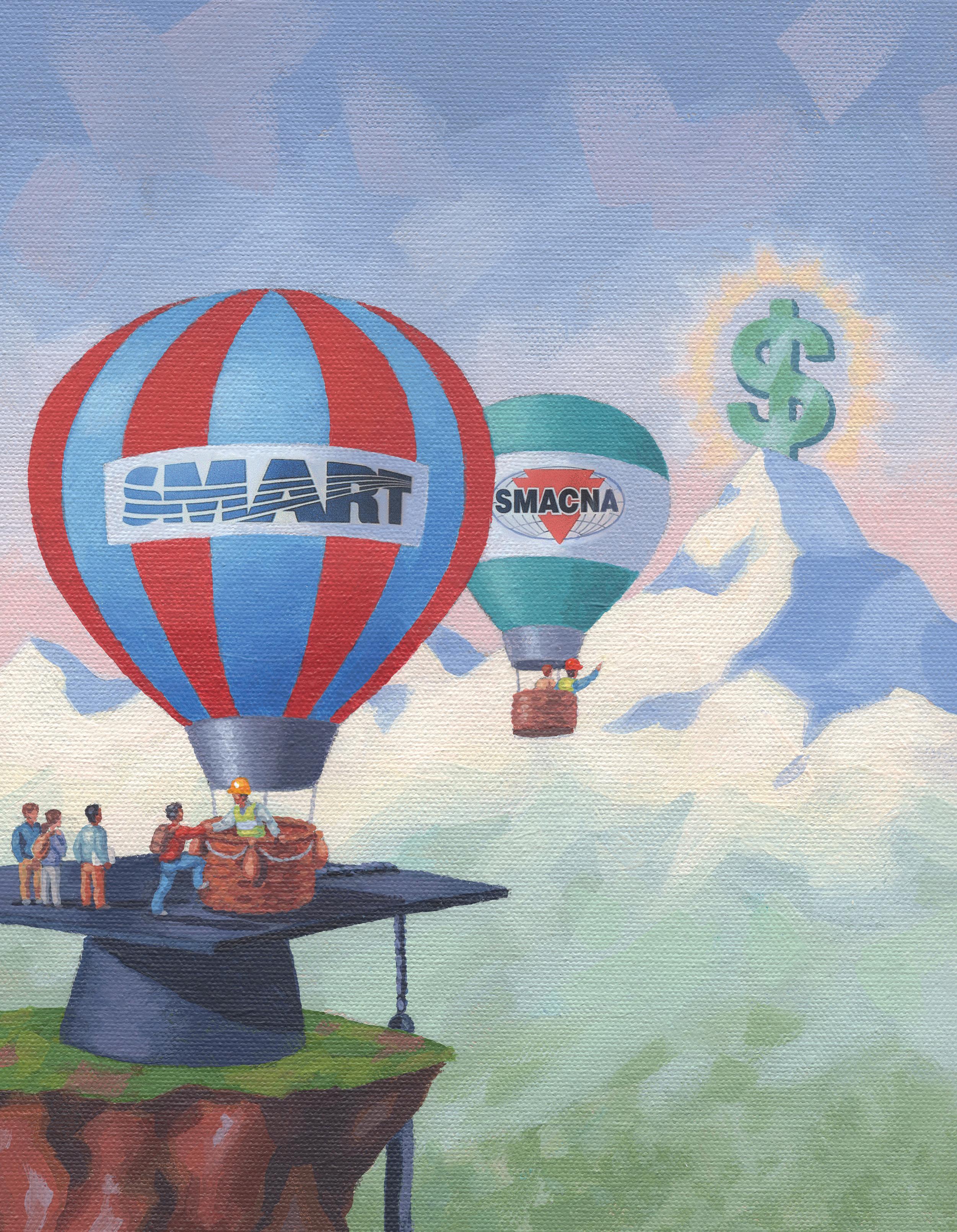
SMACNA & SMART—Building a Future Together
CONTENTS
January/February 2023 - Volume 17, Number 1
3 RESOLVE TO IMPROVE THE INDUSTRY
SMACNA and SMART can start 2023 off right by resolving to work together to make the sheet metal industry better.

4 HIGH SCHOOL TO HIGH PAID IN THE TRADES
Recruitment in high schools is still the best way to get young people’s attention.
7 BE4ALL: A PLACE FOR EVERYONE IN SHEET METAL
Belonging goes beyond DEI to create an industry we can build together.
10 NATIONAL NATIVE AMERICAN VETERANS MEMORIAL

Redland Sheet Metal and Local 124 worked together on this culturally significant project that spoke to their very roots.
12 THE SEVEN A’s OF A COURAGEOUS CONVERSATION
Sometimes the most difficult conversations are the most productive, but we must approach them with purpose. Start here.
14 CLEAN AIR FOR A HEALTHY FUTURE
COVID left opportunity in its wake. NEMI assists contractors and their workforces in accessing essential IAQ work.
17 THREE WAYS TO IMPROVE YOUR LISTENING SKILLS
Do you listen well or just wait for your chance to reply? Here are three great tips for being the best listener in the room.
19 MY JOURNEY: GINGER SLAICK
Not one to talk about herself, Ginger Slaick, chapter executive for SMACNA Georgia, has a story that speaks volumes about her character and values.
INProgress Partners
JOSEPH SELLERS, JR. ANTHONY KOCUREK
Co-Publishers
KAARIN ENGELMANN editor@pinpmagazine.org
Editor-in-Chief
JESSICA KIRBY jkirby@pointonemedia.com
Editor
POINT ONE MEDIA INC. artdept@pointonemedia.com
Creative Services
Partners in Progress is a publication of the Sheet Metal Industry LaborManagement Cooperation Fund.
All contents ©2023 by the Sheet Metal Industry Labor-Management Cooperation Fund, P.O. Box 221211, Chantilly, VA 20153-1211.
Find Partners in Progress online at pinp.org or at issuu.com/ partnersinprogress. An archive of all issues is available. Issues may be downloaded and printed for no fee.
For comments or questions, email editor@pinpmagazine.org.
2 » Partners in Progress » www.pinp.org
SMACNA & SMART—Building a Future Together
SH EE T ME TA L AI R R AIL TR AN SPO RT AT ION 10
Resolve to Improve the Industry
A new year presents new opportunities for growth, improvement, and goal setting. Recent studies suggest that that nearly 40% of adults in the United States and 55% of Canadians set yearly New Year’s resolutions. The most common resolutions are health-related, including exercising more, eating healthier, and weight loss. Other common resolutions involve improving one’s financial health and personal relationships.
Resolutions do not have to be limited to personal goals. Sheet metal labor and management partners can—and should— establish goals to improve the industry. In our first issue of Partners in Progress for 2023, the team has assembled labormanagement success stories and advice to inspire the setting and accomplishment of industry-wide goals.
With impending labor shortages in many areas and industries, local partners may consider a resolution to establish more aggressive and effective recruiting programs. In “High School to High Paid in the Trades” on page 4, industry partners explain how face-to-face recruiting, relationship building with Career and Technical Education teachers, pre-apprentice and material handling programs, and the Heavy Metal Summer Experience camps contribute to successful recruiting efforts.
Another solid resolution is to enhance workplace culture to ensure that diverse candidates know that there is “A Place for Everyone in the Sheet Metal Industry”. On page 7, SMART and SMACNA representatives to the BE4ALL Task Force explain how “belonging” in the industry goes deeper than diversity and inclusion. They share task force objectives and action plans to attract and retain the best and most qualified sheet metal workers by ensuring that all individuals feel welcome and are given training and support to perform at the highest standards.
On page 10, we highlight SMACNA BE4ALL Committee member Tammy Adams who, along with her husband, owns RedLand Sheet Metal. With the help of skilled tradespeople from Local 124, RedLand fabricated the National Native Veterans Memorial, which was important to the team on many levels.
And if you’re ready to take the first steps in implementing BE4ALL principles into your organization, start by learning the “Seven A’s of Courageous Conversation” on page 12.Difficult conversations don’t fall under the “fun”category on anyone’s resolutions list, but they are necessary, constructive opportunities for growth, and you have to start somewhere.
Since COVID-19, schools and businesses have demonstrated ineffective methods of preventing the spread of airborne illnesses. In many instances, owners and building operators
do not know the most effective ways to get the solutions they need. “Clean Air for a Healthy Future” (page 14) describes how educating owners and end users on ventilation verification and indoor air quality solutions will result in enhanced work opportunities for SMACNA contractors and SMART locals that resolve to collaborate on this initiative. Fortunately, the National Energy Management Institute (NEMI) has developed a blueprint and forms that can be customized to allow contractors and union partners to educate at the local level.
There is an individual resolution we can all make that will benefit us both professionally and personally—honing our communication skills to listen with the intent to understand, rather than reply. Turn to page 17 to learn “Three Ways to Improve your Listening Skills”. Being present and empathetic when it is time for us to listen can vastly improve our personal and work relationships.
This edition’s My Journey article (page 19) details the career progression of Ginger Slaick, a deserving past recipient of SMACNA’s Chapter Executive of the Year honor. Ginger shares her views on industry opportunities and maintains that Georgia SMACNA maintaining a good relationship with SMART Local 85 is key to moving the industry forward.
A 2021 study found that approximately two-thirds of all of those who make personal New Year’s Resolutions abandon the resolution within a month. Those who share their resolutions with other people are more likely to follow the course longer because they feel more accountable. We encourage all of our readers to work with your contractor, labor, and training partners to jointly resolve to collaborate on a common goal to make a positive difference in your industry in 2023. ▪

Partners in Progress » January / February 2023 » 3
2023
High School to High Paid in the Trades
 By / Natalie Bruckner
By / Natalie Bruckner

The opportunity to learn and earn is piquing the interest of young talent, but getting the word out requires more than posting on social media.
4 » Partners in Progress » www.pinp.org
Finally, young talent is beginning to see the sheet metal industry for what it is: an extremely fulfilling and gainful career. Part of that is exposure to the reality of what the job entails, and part of it is discovering that misconceptions about the trades are just that—misconceptions.

“Sheet metal is an amazing career with so many benefits, and yet many misconceptions,” says Alejandra Rios, firstyear apprentice with Washington-based Hermanson Company. “One of the biggest misconceptions that I came in with was that I couldn’t make mistakes. What I quickly discovered was that if you ask for help, nobody is going to tell you no. Even working in the field, you get told everybody is really rough and tough, but it’s never like that.”
Rios got her first taste of the trades during high school metal work class, and she knew right away this was the career path for her. Upon graduation, and after participating in the Heavy Metal Summer Experience (HMSE) program, she was accepted into the Local 66 apprenticeship program, starting in September 2022.
The opportunity to “learn and earn” appealed to Rios. “For economic reasons, I didn’t feel that I could pursue a career in college,” she says. “I weighed my options and it made sense on so many levels. I wouldn’t say it’s all about earning, but that is a benefit. Apprentices get paid to go to school, and they leave as journeypersons with no debt. That’s incredibly beneficial for people in situations like mine.”
With the total average student loan debt in the United States at approximately $40,000 and the rising cost of living, it’s no surprise young people are attracted to the “learn and earn” model. Tori Wilson, apprentice at T.H. Martin, Inc., is one of them and says it is important to create greater awareness of this component.
“Learn and earn is not something many of my peers are aware of,” she says. “When we graduated, most of my friends went to college because further education was expected of them. Some now have stable jobs, but a lot are still looking, and all of them are having to pay off debt. That’s not something I wanted to do.”
While earning an instant wage and the additional benefits, like a pension, appealed to Wilson, the learning element swung the deal. “I’m someone who loves learning new things, and the industry is great at catering to that,” she says. “Not only do you get paid to go to school, but also, every day you learn something new. I started my full-time apprenticeship back in 2018 and started working at T.H. Martin. I was initially in the shop, then in the field, and now in the office, where I am learning estimating. After four years, I still get excited to come into work every day.”
Tom Martin, owner of T.H. Martin, and Chris Howard, superintendent at Hermanson, agree that attracting applicants like Rios and Wilson takes a great deal of commitment.
“Everyone is in recruiting mode right now,” Martin says. “We are competing with truck driving companies, the military, even Chic-fil-A, which is offering $18 to $20 an hour. You have to be aggressive in your recruiting and go after people.”
While social media is a popular recruitment tool, Rios and Wilson are hesitant about this method. They agree that it is beneficial as a marketing tool to showcase the industry, but also they believe that the best way to target young talent is “the old fashioned way.”
“Snapchat and other platforms are okay, but going into schools and selling it as a career is more effective,” Rios says. “In high school, there is still this view of what a blue collar worker is and what a laborer is, and there isn’t much of a divide between those views.”
Wilson agrees, adding, “My generation and those younger
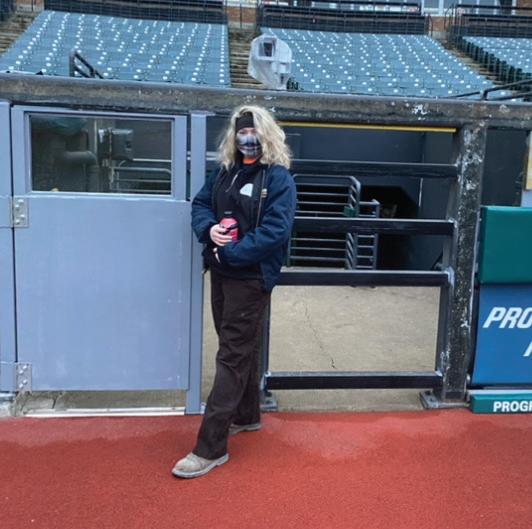
Partners in Progress » January / February 2023 » 5
“Companies struggling to attract young talent should ensure they are evaluating their apprentices quarterly or semi-annually to work on improving what they need, where they are lacking, and discovering who wants the opportunity for advancement.”
—Tom Martin, owner, T .H. Martin Inc.
than me don’t really use Facebook. Instead, offering optional classes at school where you can get an insight into the realities of the trade or having young people going into the schools and talking about the trade are great ways educate younger people.”
Jeff Reinhardt, executive administrator at Western Washington Sheet Metal JATC, agrees that this team effort by labor and management to deliver face-to-face communication is helping them source the best candidates. “Recruiting is a big part of what we do at the apprenticeship,” he says. “We have developed relationships with a lot of the high schools and skills centers in Western Washington, and because of that, we get invited to their career fairs and classes where we can have conversations with students.”
T.H. Martin and Hermanson also use this strategy, alongside their labor partners. Howard says the avenues that have been effective for Hermanson include ANEW, a local pre-apprenticeship program in the Puget Sound region of Washington state, looking at recruits from the HMSE, and bringing people into the material handling program from personal referrals.
“From ANEW and HMSE, I write letters of recommendation to the JATC asking that interested participants be considered for the apprenticeship program,” Howard says. “This way, they get to learn the industry before committing to the apprenticeship program. Not only do we vet the person, but the person can vet the industry and make sure it is what they would like to do as a career. This has been highly effective in bringing in talent that actually completes the full five-year program.”
Reinhardt says meeting with students in the classroom is a more comfortable environment for students, and this opens up conversations and questions that aren’t usually asked at career fairs. “It also gives the opportunity to talk to the career and technical education teachers about what we are looking for in an apprentice, and they help guide appropriate students to us,” he adds.
Most of T.H. Martin’s company’s recruitment is done working closely with Local 33. “We share tasks like updating
“We are starting to see a change in how the trades and apprenticeship is viewed in our area. People are starting to view the trades for what it is—a true career opportunity.”
the website, guiding new apprentices to links they can use to sign up to the Local, and collaborating on school-to-work programs,” Martin says. “It helps to work with your labor partners because when you find an individual, you can bring them in and everyone is buying into the process.”
Another powerful strategy is involving existing employees to identify poissible recuirts and following up on every recommendation. “We are constantly asking our field forepersons and project management team to identify young men and women working in the field who are potential leaders,” Martin says. “Companies struggling to attract young talent should do the same and ensure they are evaluating their apprentices quarterly or semi-annually to work on improving what they need, where they are lacking, and discovering who wants the opportunity for advancement.”
Howard agrees, adding that “mentoring and understanding apprentices’ goals is also important to retention of young talent.” Communication, afterall, is the key to success, no matter what age.
Although the numbers indicate recruitment efforts must continue, and in some areas strengthen, contractors and Locals who work together are seeing the results of their efforts.


“We are starting to see a change in how the trades and apprenticeship is viewed in our area,” Reinhardt says. “People are starting to view the trades for what it is—a true career opportunity.” ▪
Natalie is an award-winning writer who has worked in the United Kingdom, Germany, Spain, the United States, and Canada. She has more than 23 years experience as a journalist, editor, and brand builder, specializing in construction and transportation.
6 » Partners in Progress » www.pinp.org High School to High Paid in the Trades
—Jeff Reinhardt, executive administrator at Western Washington Sheet Metal JATC
BE4ALL: A Place for Everyone in Sheet Metal
A joint initiative between SMACNA, SMART, and the ITI is focused on recruitment, retention, and ensuring the best candidates understand they belong in sheet metal.
By / Jessica Kirby
The Belonging and Excellence for All (BE4ALL) initiative might just be the sheet metal industry’s most effective and progressive recruitment tool. Launched in December 2021 as a joint effort between SMACNA, SMART, and the International Training Institute (ITI), it seeks to answer age-old questions around work culture and belonging, while benefitting the signatory sheet metal industry in many ways.
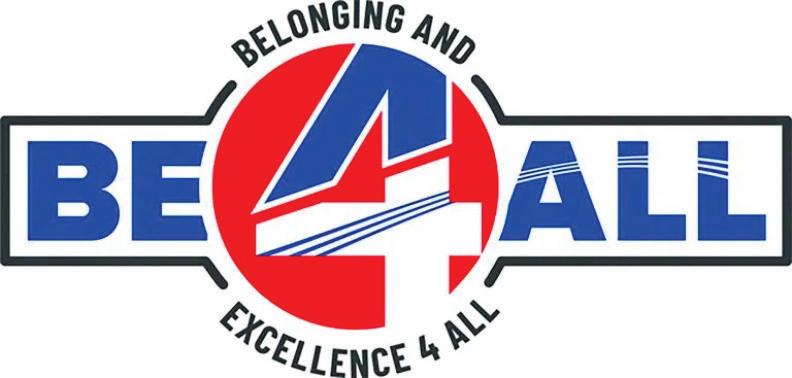
Some of its intended positive impacts include reshaping the industry’s work culture so that contractors attract and retain the best and most skilled workforce possible, regardless of race, gender, religion, sexual orientation, ethnicity, or nationality. It also helps contractors and Locals work together to meet the real-world demand for the best and most qualified workforce available for the industry, without quotas or other arbitrary demands on companies.
BE4ALL is guided by two diverse committees. One comprises contractors, their management representatives, chapter executives, and SMACNA leaders from the United States and Canada. The SMART committee has a similar structure involving International and local union leadership and Local members, including a journey-level sheet metal workers and an apprentice. The leadership and committees for
both organizations, along with ITI, meet quarterly to plan and coordinate BE4ALL activities across the industry.
BE4ALL’s efforts address one of the industry’s most pressing needs: recruiting skilled workers now and into the future. The initiative includes the ability to tailor and target programs and strategies to ensure that particular groups have what they need to reach the universal goal of belonging. The work of belonging will sometimes require difficult conversations, but it also requires treating one another with dignity, respect, and compassion. It requires seeing our common humanity in other people.
Donna Silverman and Louise Medina are staff liaisons to the SMART BE4ALL Committee. Medina has been a sheet metal worker for more than two decades and is now the SMART Director of Special Projects.
“As a woman of color who has faced many barriers throughout my career, I feel it is important to get the message out to membership that we need to change the way we say and do things to make others feel like they belong,” she says.
Silverman agrees, noting that unions should be a welcoming place for all people because that what the signatory workforce stands for. “Taking part in this initiative will work toward creating an environment where every member will feel like
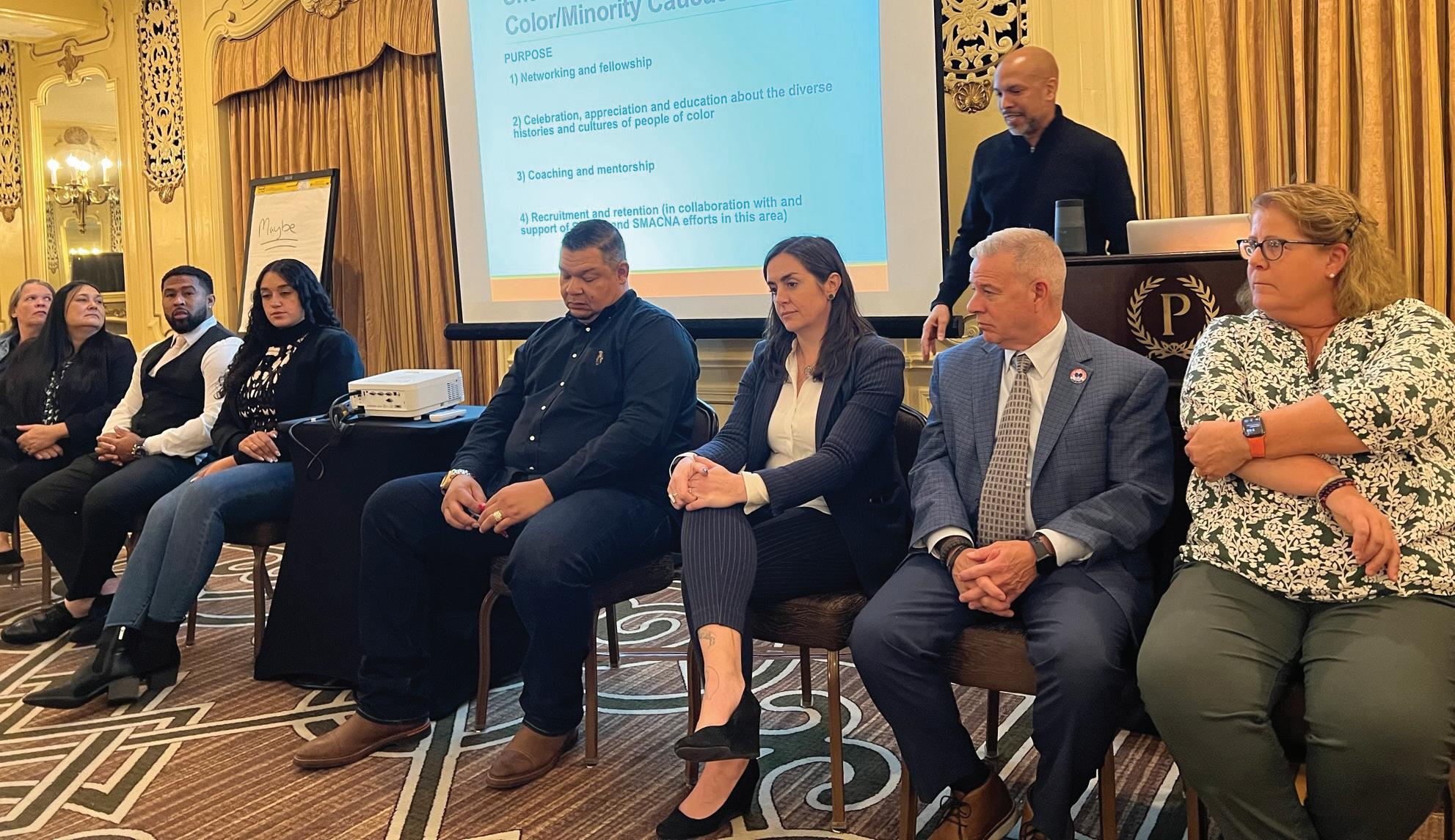
Partners in Progress » January / February 2023 » 7
they belong.” she says. “This will increase productivity and solidarity, which will help improve retention.”
Jennifer Lohr, vice president of Fisher Balancing in New Jersey, was excited to join SMACNA’s BE4ALL Committee. “I am passionate about our trade and the work that we do,” she says. “If there is a way for members to be a part of this amazing industry while being able to learn, work, and grow in an inclusive and positive environment, I want to be a part of that effort.”

Lohr says it is important for contractors to care about and be a part of BE4ALL because it is imperative to the trade’s survival. “We need people of excellence, and in order to fill the void left by retirees in the industry, we need to cast a large net and bring in all of the best talent,” she says. “The problem is, if we bring in this new talent and they aren’t treated with dignity and respect because of our biases—implicit or otherwise—we won’t retain the next generation of sheet metal workers.”
But before industry members can pursue the mandate, everyone must understand the parameters and objectives, beginning with one simple question: What is the difference between “belonging” and “diversity and inclusion”?
According to the BE4ALL initiative, understanding the difference begins with exploring the terms diversity, inclusion, and belonging.
Diversity means that everyone, regardless of their race, gender identity, age, or other identity strands, is invited to
participate in and benefit from the industry. Inclusion means that everyone has a seat at the table and has a way to make their voices heard. Belonging goes much deeper than diversity and inclusion. It means that when people come to the table, they feel that they can bring their full, authentic selves, including all parts of who they are as human beings. It is also about building the table together, co-creating, and transforming the industry to ensure it remains relevant and competitive with all hands on deck.
As important as it will be to understand what BE4ALL is, it will be equally necessary to understand what it is not. It is not about blaming or shaming individuals or granting special treatment to one segment of the membership over another. The initiative is for all members and contractors, the emphasis lying on every human being experiencing belonging, and it is clear this isn’t the case for some groups.
At the 2022 Partners in Progress Conference, Executive Vice President of SMACNA Western Washington Julie Muller and Northwest Regional Council president Tim Carter described how the two organizations worked together to address diversity, inclusion, and belonging in their areas. Facilitated by Dushaw Hockett, founder and executive director of Safe Places for the Advancement of Community and Equity (SPACEs) and BE4ALL facilitator, Muller and Carter detailed the ways they came together to shift the culture, so every person feels welcome.
“We’ve seen a dramatic reduction in the wash-out rates for women and people of color apprentices because we raised the bar in diversity, inclusion, and belonging,” Carter says.
Specifically, they improved the quality of training and support provided to apprentices to ensure that every person had what they needed to perform at the highest standards of excellence. The results were immediate.
“This approach reinforced two things,” Muller says. “This work is not about lowering standards, and the work of belonging does not view people as inadequate or deficient. It sees talent and potential in all human beings. It is our job to nurture it.”
But there is still work to be done.
The program’s success rests on acknowledging barriers to contractor buy-in, which could simply be broaching unfamiliar territory. “Contractors have done things a certain way for a very long time, and some don’t feel like there is anything wrong with how we have been doing things,” Lohr says. “Contractors will tell me that they feel they are being influenced for the purposes of bringing in more candidates rather than the best candidates. We must explain that BE4ALL is about trying to bring the best people into the trade.”
One reason SMART members may not yet feel connected to the BE4ALL initiative is that they don’t understand why the program is necessary, since there has been recent progress in this area.
“While we may have made some progress with respect to diversifying our membership and getting the message out, we

BE4ALL: A place for Everyone in Sheet Metal 8 » Partners in Progress » www.pinp.org
still hear from members in underrepresented communities, such as women, members of color, or members from the LGBTQ2S+ community, who experience prejudice on the job and do not feel there is a place for them as a sheet metal worker,” Medina says.
“The benefits from BE4ALL are that when every sheet metal worker feels a sense of belonging in our union, we will be able to retain more members, which results in our union becoming more competitive,” Silverman says. “We will be able to meet the workforce needs when our contractors request workers for all of the construction projects we know are coming down the pipeline.
“To sustain pension benefits for retirees, we need to keep attracting workers to the unionized sheet metal industry. BE4ALL also will enhance union solidarity among our membership, which benefits everyone.”
In 2022, BE4ALL began implementing its four-part agenda that included assessment—surveying and interviewing leaders across the industry to better understand their hopes, wants, needs, and fears related to the BE4ALL work. The second step was awareness, which involved conducting SMACNA, SMART, and ITI leadership training sessions focused on strategies for reducing bias and increasing belonging. The third step was alignment, which will see all three organizations converting the assessment findings into concrete action steps and meeting quarterly to explore ways to collaborate. In 2023, the groups will act on implementing their action steps.
But BE4ALL is not a quick fix project. Over the next few years, the initiative expects results in five key areas:
1. Expansion – expanding and diversifying the pool of people from which the industry recruits.
2. Recruitment – proactively recruiting new workers, both bargaining and non-bargaining, into the industry.
3. Training – equipping the workforce with the skills, tools, and values they need to be successful.
4. Retention – creating the type of work and business environments where people want to stay and where they can imagine a long career of service and contribution.
5. Advancement – helping workers climb the “ladder” into leadership positions or other opportunities.
It is truly forever work, because to transform an entire industry it will take years, plus ongoing maintenace. However, the committee plans to set annual benchmarks to ensure measurable goals and progress.
But none of it is possible without labor-management cooperation to prioritize these efforts, coordinate the messaging, take proactive steps to prevent jobsite issues, and promptly address issues as they arise.
“Communication is key to maximizing the potential of BE4ALL, and building strong communication channels between labor and management is a great start,” Silverman
says. “Labor and management can meet and start having these discussions about issues specific to their local area and how they can work together to address them.
It is also important to include JATCs to ensure everyone is on the same page. With each conversation, the discussion about topics that are often uncomfortable will get easier, and the partnership will get stronger.
“When we do this important work together as a team, it will not get lost in the cracks,” Lohr says. “It will remain front and center until we have accomplished our goals in bringing in the brightest and best our country has to offer.”
Ideally, BE4ALL will work itself obsolete—that is, in a perfect world everyone would treat one another like human beings and an initiative like this would be unnecessary. To reach that goal, the industry must first collectively address barriers, including biases and stereotypes that everyone has internalized, most of the time unconsciously.
“These biases and stereotypes may stem from the places where we grew up, or the schools we attended, or the families in which we were raised, but they must be addressed,” Medina says. “BE4ALL is the pathway for how we get there.”
Learn more at pinp.org/resources/be4all ▪

Jessica Kirby is editor-publisher for Point One Media, a small but sturdy family-owned trade magazine creator representing some of North America’s best construction associations. She can usually be found among piles of paper in her home office or exploring British Columbia’s incredible wilderness.
BE4ALL CALENDAR 2023
This 2023 BE4ALL calendar is a tool for your members/employees/ colleagues to learn more about the different cultures and faiths that make up our ever-evolving industry. Each month highlights several important holidays/ observances your peers may take part in and even a few that might be less familiar. In addition to noting the exact date of the observance, an explanation of that particular day’s significance and history can be found directly below the calendar.
Please download, print, and post this calendar in a public space, such as a break room, lunchroom, or other communal meeting areas. By doing this, we hope you can use this resource to start meaningful conversations that will enable you to learn more about your colleagues and develop a new understanding of the different cultures, ethnicities, and faiths that make up the sheet metal industry. If you want to learn more about a particular day, scan the QR code so you can travel to the BE4ALL calendar page where you can learn more about the history and tradition associated with a specific observance. ▪
Partners in Progress » January / February 2023 » 9
National Native American Veterans Memorial
RedLand Sheet Metal and its Local 124 workforce take pride in creating a piece of history.
By / Jessica Kirby
The National Native American Veterans Memorial sits on the grounds of the Smithsonian National Museum of the American Indian in Washington, DC. It is a tribute to Native American heroes, recognized for the first time on a national scale for enduring and distinguished service in every branch of the US military.
For Henry and Tammy Adams, SMACNA Oklahoma City members and owners of RedLand Sheet Metal, along with their Local 124 workforce, it was a project of great importance and honour that goes back to their roots.
Tammy Adams is a citizen of the Choctaw Nation of Oklahoma, and so were her parents. Her father was a navy veteran of the Korean War. “In Native culture, all tribes have warrior societies, and service in the military and to one’s country is very important,” she says. “It is important to know that Native men and women, although a minority in the United States, serve at the highest number per capita among other groups. It is honoured to serve your country, and I am proud of my father’s service. So, this project was very important to us.”
The memorial, called Warriors’ Circle of Honor, is a circle (or “hoop,” an important Native concept) that is 12 feet across and was constructed of stainless steel over about 2,500 person hours.
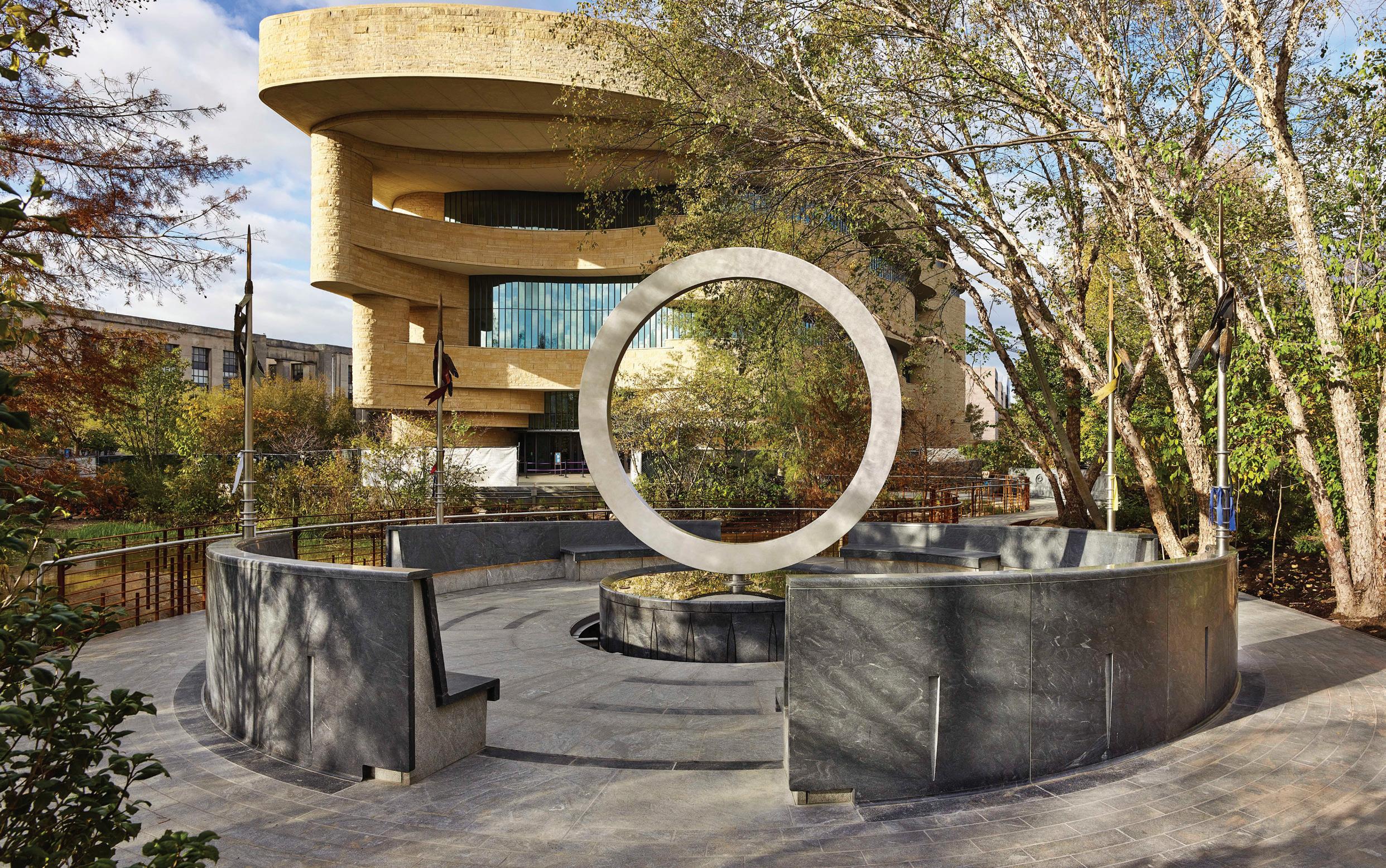
Warriors’ Circle of Honor was designed by self-taught Indigenous artist Harvey Pratt, who is a citizen of the

Cheyenne and Arapaho Tribes of Oklahoma and a veteran who served in Vietnam as a US Marine in Air Rescue and Security. He is recognized by the Cheyenne People as an outstanding Southern Cheyenne, and he was inducted as a traditional Peace Chief—the Cheyenne Nation’s highest honor.
The circle is set vertically on top of a low, carved granite base that is fashioned to resemble a ceremonial drum. Water flows continuously outward from the center of the drum, and a burner is built into the hoop so a fire may be lit on ceremonial occasions. A circular resting area surrounds the monument, offering space for meditation and quiet reflection.
Visitors travel a surrounding walkway called the Path of Harmony and enter the monument through openings at any of the four cardinal directions. This respects different cultural practices regarding the appropriate direction from which to enter the central space. Visitors may leave prayer ties on four vertical stainless steel spears with bronze tips. The seals of the five branches of the armed forces are on a nearby wall.

“This was a true passion project for us,” Tammy Adams says. “It was important to me and my family. We are very involved in the Native community, and having this kind of memorial to recognize Native veterans in Washington, DC, the nation’s capital, is wonderful.”
RedLand Sheet Metal was approached by 1902 Sheet Metal (previously Swanda Brothers, Inc.) to partner on the project.
10 » Partners in Progress » www.pinp.org
Photo by National Museum of the American Indian
Jim Brown, vice president of 1902 Sheet Metal, was offered the opportunity to bid on the project through a nationwide competition and thought immediately of his long-time friends at RedLand Sheet Metal for the stainless steel fabrication.
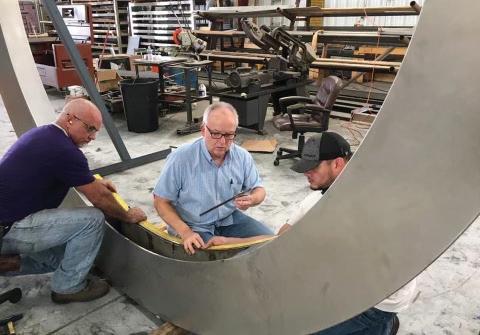
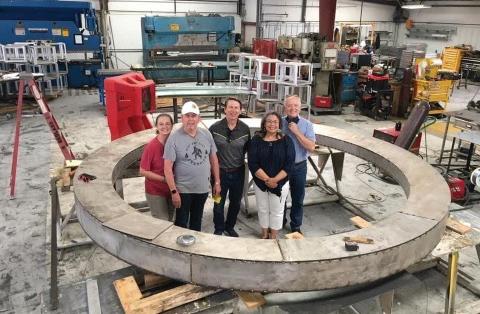
RedLand completed the fabrication and 1902 Sheet Metal handled materials ordering and logistics, including coordinating the shipping and installation. The work took place during COVID, when even procuring enough 3/8-inch gauge stainless steel was a challenge.
Lamar Lester, Local 124 member and foreperson on the project, says that at first he thought the memorial would be just another project. “Then the Smithsonian people came, the architects and the artist came in, and the project gained momentum very quickly.”
The hoop’s size presented many challenges. “It is not something you can just flip over when you need to weld the other side,” Lester says. “It is a huge monument, so it had to be welded, ground, and polished in position. The radiuses were 3/16” so the tolerances were very tight, but we were able to achieve those.”
The sheer weight of the monument called for careful installation logistics, as a crane had to lift it over the trees in the living landscape located just east of the museum.
“Once in place, it was measured with a GPS satellite to make sure the monument is shooting straight to the sky and level with the universe,” Lester says. “It was tack welded in place overnight and freed from its supports the next day. They came back to shoot it with the GPS again, and it was within the margin.”
The complexity and minuscule room for error that is common on historical monuments and other projects of cultural significance require well-trained, highly skilled craftspersons.
“You can’t just throw anyone new or inexperienced on a project like this,” Lester says. “Between all of us, we brought more than 100 years combined experience. It took a lot of welltrained, talented individuals, and not just in the fabricators, but in the management team that led it, too.”
Tammy and Henry Adams and their parents were all union members in their industries. Henry Adams was a Local 124 member for more than two decades and an apprenticeship instructor for 12 before he opened the doors at RedLand Sheet Metal.
The company opened as a non-union shop because it was very small and stainless steel is a niche market. But very quickly the Adams’ realized that the non-union workforce didn’t have the skill level the company required to be successful.
“Henry said we would have to go union for the trained and skilled workforce, and since we did that with Local 124, we have the best people,” Adams says. “Our roots are union, and that part of our careers and history is so important. Now we are SMACNA members, and that is important to us, too. We have been on both sides of the table, so it is important to us that our employees are treated well and that they know we value them.”
Both Adams and Lester acknowledge that when they think about the significance of where this memorial is located, among other monuments to American veterans, and in a place where so many will see and enjoy it, it is almost overwhelming.
“As a Native woman, to have this recognition of Native veterans in Washington, DC, is very meaningful,” Adams says. “Our contribution to this country, our history, has gone overlooked. That is a changing trend, and our tribes are becoming more powerful politically. We are getting the information out there.”


“Once it was installed and we saw it there, in the shadow of the capital, the magnitude of this project hit us,” Lester says. “It was the project of a lifetime.”
The National Native Veterans Memorial was dedicated with a procession and ceremony on the National Mall on November 11, 2022. Learn more at americanindian.si.edu/ visit/washington/nnavm ▪
Partners in Progress » Januay / February 2023 » 11
Jessica Kirby is editor-publisher for Point One Media, a small but sturdy family-owned trade magazine creator representing some of North America’s best construction associations.
(l to r) Lamar Lester, Henry Adams, Russell Adams. Photo by RedLand Sheet Metal
(l to r) Gina Pratt, Harvey Pratt, Jim Brown, Tammy Adams, and Henry Adams. Photo by RedLand Sheet Metal
The A’s of a Courageous7Conversation
BE4ALL is a bold, multi-year effort to transform the sheet metal industry by ensuring our work environments are welcoming to all workers and that we achieve the highest standards of performance and excellence.

To make this vision a reality, BE4ALL has adopted several strategies. As a part of this effort, this feature will focus the seven components of a courageous conversation.
A courageous conversation is an exchange between two people. Usually, the dialogue is initiated in one of two situations:

a) When we feel that another person has wronged us; and/or
By BE4ALL
b) When we’ve done or said something (real or perceived) to wrong another person.
The seven A’s are appropriate for disagreements or tensions around ideas, opinions, beliefs, and personalities. They’re not necessarily applicable in situations involving physical altercations, harassment, or discrimination.
Ultimately, courageous conversations are a tool for resolving interpersonal conflicts and/or disagreements in the workplace or within labor-management partnerships. But, beyond this, they support us in being better human beings to one another. The following seven components can be practiced in sequence, or
12 » Partners in Progress » www.pinp.org
Learn more about how to take the first step in constructively and successfully resolving conflicts/disagreements in the workplace.
© Can
/
Stock Photo
djvstock
you can pick and choose which ones are more appropriate to your situation. They are:
1. Anchor
Initiating a courageous conversation is hard. This is especially the case if you feel the other person is wrong OR that you will lose something (i.e., the other person will see you as “weak” or “giving in”). Therefore, it’s important to prepare yourself— mentally and emotionally—before the conversation so that you have energy to draw on for what can be a long and uncomfortable process. Preparation may include listening to music, going for a walk/run, etc.
2. Appreciate
Share with the other person at least one thing you genuinely appreciate about them. It can be something they’ve said or done, or it can be some special quality, talent or gift they have.
First, let me say how much I appreciate __________.
3. Acknowledge
Share with the person ways that you may have contributed to the problem or tension. If this isn’t relevant to your situation, you can skip this step.
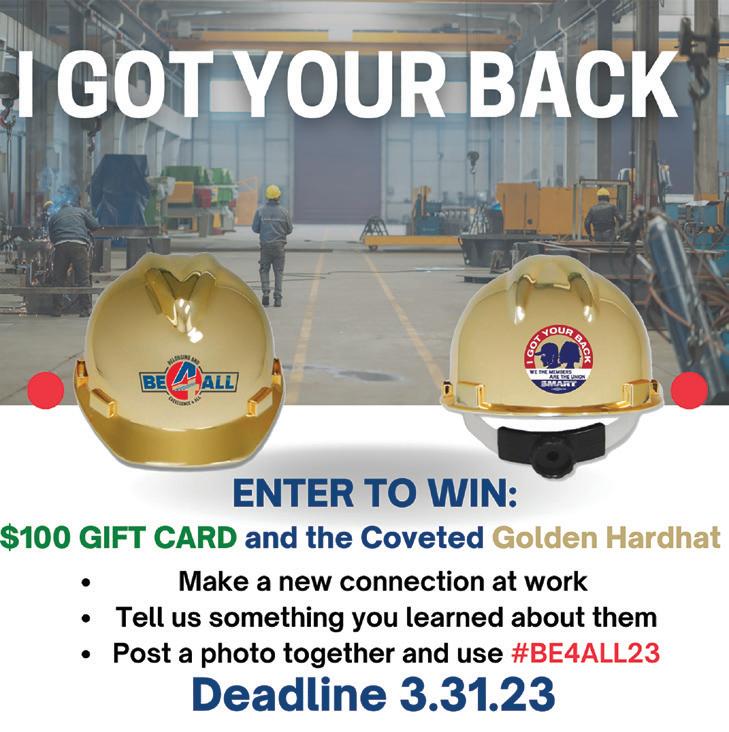
I want to acknowlege that, at times, I can be (or I may have done) __________. And this may have contributed to the problem or tension we have.
4. Acknowledge
Share with the person ways something they may have said or done impacted you. Share the feeling of the experience, NOT your evaluation of the experience or the person.
I’ve felt __________ (i.e. hurt/angry/pissed off/ etc.) when you’ve said or done __________. This may not have been your intent. But this was the impact. (Pause for any response the person may have.)
5. Ask
Whether you were the person wronged or you wronged someone else, ASK the other person a few probing questions as a way of approaching them from a place of understanding and curiosity.
Is there anything I/we can do differently in the future? I want to better understand where you’re comig from. Will you please asy more about what you meant when you said __________.
If you wronged the other person, ask: What’s one thing you need from me to help repair this situation?
6. Affirm
After the person shares, paraphrase or summarize what they shared by stating:
“What I think I hear you saying is …”
Affirming DOES NOT mean you agree with the person, it just means you are listening with the intent to understand.




7. Agree
Both people agree on a new way to move forward (i.e., “let’s agree that, in the future, we’re going to ___________.”) OR ask the person for their ideas and support on how to move the relationship forward.
Through the use of this technique, you will be able to deescalate a potential confrontation before the issue evolves into something more serious. ▪

Partners in Progress » January / February 2023 » 13
© Can Stock Photo / smarnad
Clean Air for a Healthy Future
NEMIC provides essential IAQ training for contractors and their workforces in the fight against airborne illnesses
 By / Sheralyn Beleau
By / Sheralyn Beleau
When New Jersey first dispersed COVID mitigation funds, some schools bought plastic fans for classroom windows. The fans brought in fresh air but made the rooms unlivable in winter.
A school in Sacramento spent millions of COIVD mitigation dollars on portable air filters to purify classroom air. They quickly found that teachers were turning the air filters down because the noise was drowning out discussions. Worse, each air purifier could clean only one eighth of a classroom, so they all had to be returned.
Many schools and businesses have made similar knee-jerk purchases.
“We’ve got a once in a lifetime, generational opportunity to get the funding we need to solve IAQ problems,” says
Jeremy Zeedyk, Northeast Representative for the jointly funded National Energy Management Institute Committee (NEMIC). “And it’s becoming apparent that building owners and maintainers don’t know what they’re looking for.”
Fortunately, long before anyone had heard of COVID, NEMIC was already investigating indoor air quality. In partnership with ASHRAE, the University of California, Davis, and SMACNA, NEMIC has developed videos, legislative support, expert witnesses, sample evaluation forms, and training to help sheet metal professionals deliver real IAQ solutions.
“We provide answers to help owners get the results they’re trying to achieve,” Zeedyk says. “We find that the more fresh air we bring indoors, the less disease spreads.” In fact, a recent study by Fondazione David Hume in Italy found that just six air changes per hour reduces the transmission rate of COVID by 80%.
Zeedyk estimates that NEMIC has given the COVID IAQ presentation 100 times, to anybody who wants to hear it. “We’re trying to give our local people the tools to take the information and be able to present it, as well,” he says. “They find that people are interested and asking questions.”
The Equity
Some of the organizations Zeedyk and NEMIC’s Director of Education Chris Ruch have worked with are labor unions like the American Federation of Teachers and the Actors Equity Association (the Equity). The Equity, which represents actors in live venues, has specific concerns about the back of the house, which comprise the small, poorly ventilated spaces where actors change between appearances on stage. Zeedyk and Ruch put together HVAC protocols the Equity could take to facility owners as they renegotiated contracts.
They advised the Equity to find certified, qualified professionals—such as signatory sheet metal workers—to perform any needed work. “Studies have shown that if you spend a lot of money on high performance, high efficiency equipment, but it’s not installed and maintained properly, then it’s not doing anything of value,” Zeedyk says. “It’s wasting energy efficiently. So, having the equipment installed and

There’s a lot of work with indoor air quality ... If we don’t have the best people out there to go to work, then we’re going to be in trouble. We’re going to miss the boat. It’s very important to get that IAQ work.
—Bob Butler, president, SMART Northeast Regional Council
maintained by a skilled, trained, certified workforce is the key.”
SMACNA contractor Fisher Balancing Company in Williamstown, New Jersey, has the certified SMART workforce the Equity was looking for. After Fisher Balancing brought one theater up to the Equity’s new IAQ standard, the theater owner sold more tickets than ever before. The upgrade corrected the building’s thermal problems, making the building more comfortable for patrons—and boosting summer sales.
Other COVID mitigation projects followed, giving Fisher contracts in community colleges, a university, hotels, and even a florist shop. “These opportunities are there for all SMACNA contractors and their union workforces,” says Fisher Balancing President Matthew Sano.
Bob Butler, president of the SMART Northeast Regional Council, urges locals to get the training they need to find and solve ventilation problems. “There’s a lot of work with indoor air quality,” Butler says. “If we don’t have the best people out there to go to work, then we’re going to be in trouble. We’re going to miss the boat. It’s very important to get that IAQ work.”
NEMIC Resources
The Ventilation Verification tab at NEMIOnline.org includes pages of guidance to help Locals and contractors give customers the same service that NEMIC, Fisher Balance, and the union workforce provided the Equity. The documents outline the ventilation verification process, with general specifications for most facilities and educational facility specifications for school settings. The white paper, “Design Guidance for Education Facilities” even details the correct way to use open windows in older, unventilated classrooms. (Hint: When it gets too cold, close the windows!)
“The first step is ventilation verification, with nine focus areas,” Zeedyk says. “I like to say the first step has nine pieces.
Partners in Progress » January / February 2023 » 15
” “
Step two is the design engineer evaluating the ventilation verification report and making recommendations for repairs, adjustments, and upgrades. The third step is doing the actual repairs, adjustments, and upgrades.”
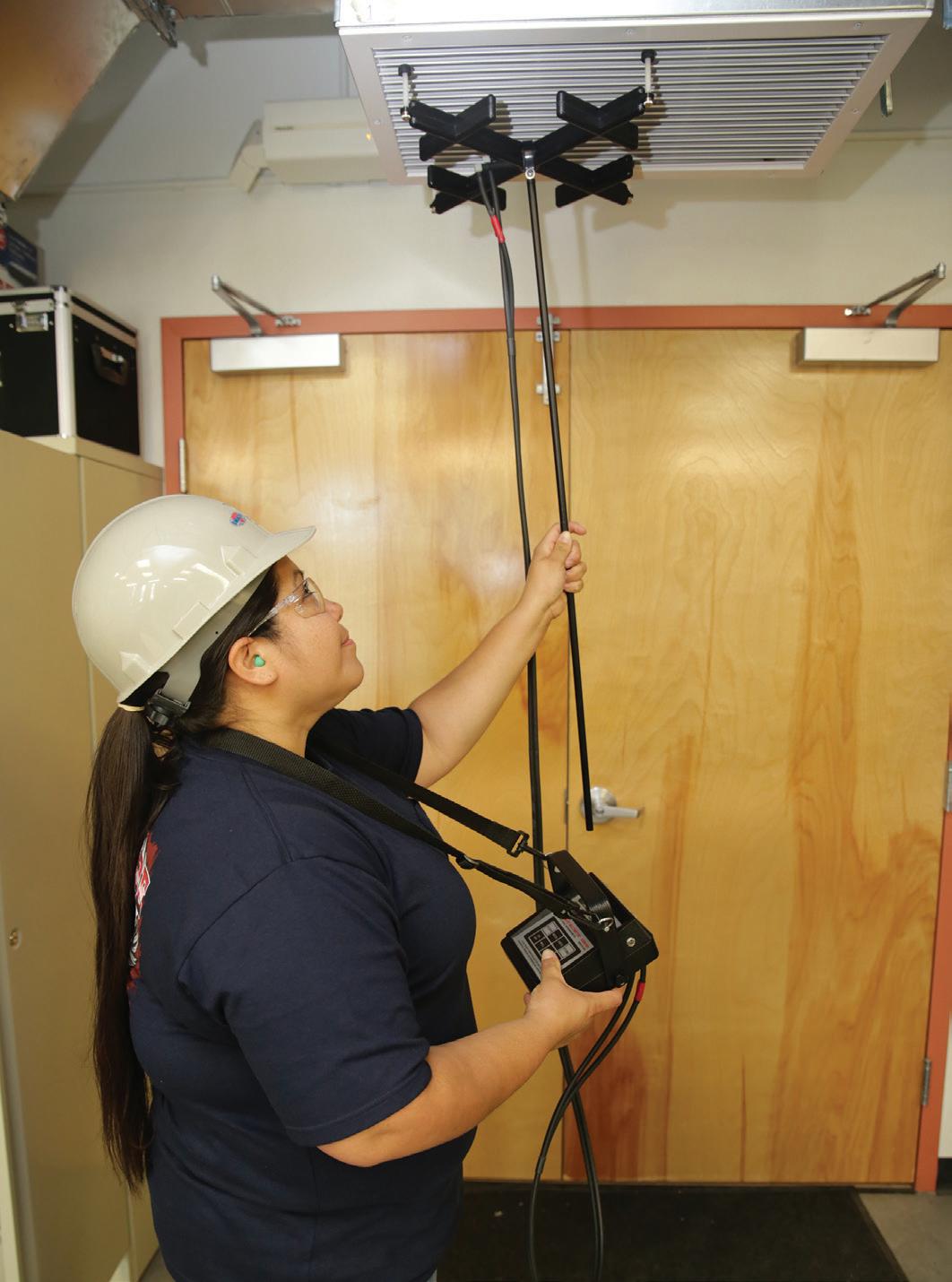
All of NEMIC’s ventilation verification forms are open source so they can be customized by any contractor or building owner. “Take out what you want and add your company logo,” Zeedyk says. “We created these documents to bridge the gap between what the owner wants and what a contractor wants to provide.”
NEMIC just received ANSI accreditation for its updated IAQ-Ventilation Verification technician and supervisor curriculum and certification exams. This third-party accreditation gives customers confidence that contractors can deliver the results they promise. The ITI also has an online program so any journeyperson can learn how to do the initial IAQ evaluation. Sano encourages HVAC contractors to make sure that all employees receive basic IAQ certification. “TAB specialists can follow up to correct any problems the general workers identify,” he says.
Beyond COVID
COVID is new, but flu and other contagious diseases shut down American schools every year. Last fall, Butler realized that area districts still don’t understand respiratory viruses. A Massachusetts school closed after 250 kids caught the flu.

“The news reports talked about cleaning all the desks, all the classrooms, and the cafeteria,” Butler says. “They didn’t talk about cleaning the mechanical system or even looking at it because they don’t know. I had one of my organizers knocking on the door at the school to say, ʻListen, did you check the mechanisms? Did you check the air filters or to see how much outside air you’re bringing in?’”
COVID mitigation gives us new tools to keep schools open. “When we use extreme measures to control a much smaller COVID virus, that’s going to help with particles like colds, flus, and mold spores,” Zeedyk says. “Washing your hands is good, but the biggest bang for your buck is looking at your filtration and air flows, because that limits the spread.”
“This is not an emerging market,” Sano says. “This work should have been done already. School boards know the money is available. We’re going back to refine early, knee-jerk reactions.” ▪
16 » Partners in Progress » www.pinp.org Clean Air for a Healthy Future
A Colorado native, Sheralyn Belyeu lives and writes deep in the woods of Alabama. When she’s not writing, she grows organic blueberries and collects misspellings of her name.
Three Ways to Improve your
Listening Skills
By John Millen
Most people do not listen with the intent to understand; they listen with the intent to reply.
— Stephen Covey
When I say “What is your most important communication skill,” you might consider: public speaking, handling questions, or reading people.
Those are all important skills, but none of them are the most important. Your most valuable communication skill is listening.
If you think deeply about a problem you’ve had communicating with someone, you’ll find it’s probably a listening problem. You and the other person are not really understanding one another.
That’s because we normally think of communication as outgoing. We think that if we’re talking we must be communicating.
That leads to people speaking at one another instead of really listening. We see so much of this on social media and in politics where people spend a lot more time shouting at one another than listening.
It turns out that two monologues do not equal a dialogue. They are not communicating.
Are you really listening?
Think about what you do when your are supposed to be listening to someone:
• Are you thinking about something else?
• Are you waiting for your turn to speak?
• Are you listening for keywords that you can use to pivot to what you want to say?
All of these are signs you are not really listening. So, what is listening? It’s not just hearing the words someone is saying. The best kind of listening is understanding the whole meaning of what is being said, as well as what is not being said—the hidden messages.

Partners in Progress » January / February 2023 » 17
© Can Stock
Photo / Andreus
Seek to Understand
That’s why Stephen Covey, the author of 7 Habits of Highly Effective People,* made one of the seven habits, “Seek First to Understand, Then to Be Understood.”
Covey created five levels of listening, from worst to best:
1. Ignoring
2. Pretend listening (patronizing)
3. Selective listening
4. Attentive listening
5. Empathic listening
Covey explains:
When I say empathic listening, I mean listening with the intent to understand. I mean seeking first to understand, to really understand. It’s an entirely different paradigm.
Empathic (from empathy) listening gets inside another person’s frame of reference. You look out through it, you see the world the way they see the world, you understand their paradigm, you understand how they feel.
Are you present, fully present, and really listening to someone who matters to you? Listening fully and deeply is how we can let people know they really matter to us.
Oprah Winfrey’s superpower
Oprah Winfrey has one superpower that has contributed most to her success: she is an amazing listener.
To help with your listening skills, here are my three strategies to quickly improve your listening skills, along with how Oprah uses these to draw out her guests:
1. Focus all of your attention on the person speaking
Oprah keeps her eyes directly on her guest and will often move forward in her chair to show her complete focus. Even though there are cameras and people all around, Oprah’s attention makes the person feel comfortable to open up.
What you can do:
• Put your phone away, out of view
• Maintain eye contact and lean in to stay focused
• Gently nudge away the thoughts in your head and return to the present moment
2. Make an emotional connection
Oprah shares her emotions with her guests and asks emotionbased questions about how they are feeling. This creates deep trust and elicits emotions from the people she interviews.
What you can do:
• Avoid the impulse to give your response, just listen
• Try to understand where the person is coming from by taking in body language and facial expressions
• Feel the emotions are being expressed and ask why they feel that way
3. Show your empathy and understanding
Oprah will often restate in simple terms what her guest has said. She does this to reinforce the idea for her viewers, but also to let the guest know that she understands and appreciates their thoughts.
What you can do:
• Wait for the right moments to ask open-ended questions
• Test your understanding by paraphrasing what you heard and asking if it’s accurate
• Express an interest in learning more from the person at that moment or continuing the conversation in the future
I could offer you many more strategies that I use in my communication coaching and training, but any one of these tips will instantly improve your listening skills.
You can adopt many new communication habits based on these tips, but here’s a simple habit for you to start right away.
New communication habit: listen twice as much as you talk.

Start checking yourself. When it’s time to listen to someone at work or at home, are you really there?
Listening makes or breaks relationships. It’s that powerful. That’s why it can be your most important communication skill. Don’t worry about being perfect. Just make a start. Just listen. ▪
John Millen is a keynote speaker and CEO of the Reputation Group, a leadership communication company in Columbus, Ohio. John’s purpose is to help leaders and entrepreneurs grow their businesses and careers by tapping the power of their stories. Since founding the company in 2004, he has worked with more than 7,000 leaders. Learn more at JohnMillen.com.
18 » Partners in Progress » www.pinp.org
Three Ways to Improve Your Listening Skills
My Journey: Ginger Slaick
Executive Vice President, Georgia
SMACNA
When Ginger Slaick started her career in the sheet metal industry, it wasn’t for the usual reasons.
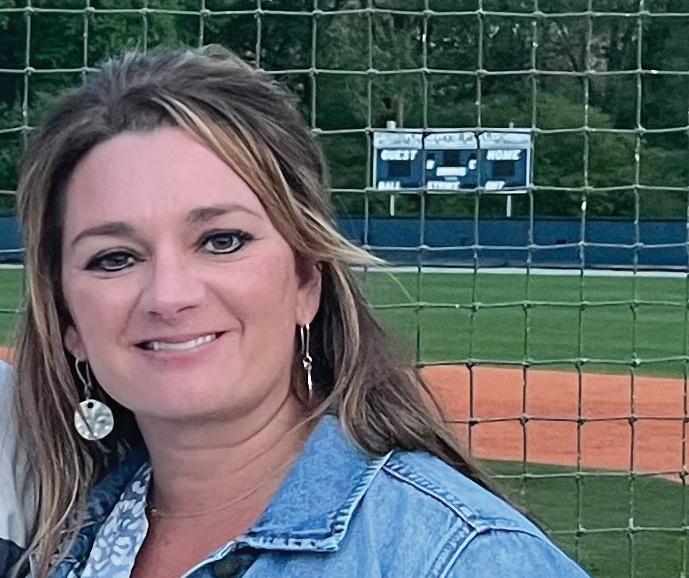

“After high school, my plan was to become a court reporter,” she says. “So, I went to Brown College of Court Reporting, but quickly realized my fingers weren’t going to move that fast. I then studied to be a paralegal, but just was not happy in that field.”
SMACNA Georgia was looking for an administrative assistant, so Slaick responded to a newspaper ad. “I honestly had no idea what association management was, but I took a chance,” she says.
Her predecessor Buddy Mawyer hired her, and for the next 18 years, he was a kind and helpful mentor who gave her every opportunity to learn the industry. When it was Mawyer’s time to retire, Slaick applied for the chapter executive position. It was a step up she felt ready for, but mostly, it was to serve an industry that she believed in.
“I always loved working for the association, the people, what SMACNA stands for, and the opportunities it provides,” she says. “It was time for me to take the next step and advance my career.”
Although she brought experience to the table, it is important to know she wasn’t just handed the position. The board of

directors interviewed her and several other candidates, eventually deciding she was the best person for the job.
Slaick became the first female chapter executive for the sheet metal industry in Georgia, a milestone that typically means more to people who hear it than it does to her. “I try not to get caught up in gender,” she says. “I’d just like to normalize that the board of directors hired the best person for the job, and I had to go through the same process as everyone else.
“In my job as an administrator, I knew my role. I worked hard, and I took every opportunity to learn as much as I could about the association. My selection as chapter executive speaks volumes for the contractors I represent. I appreciate their openness and willingness to give me that opportunity.”
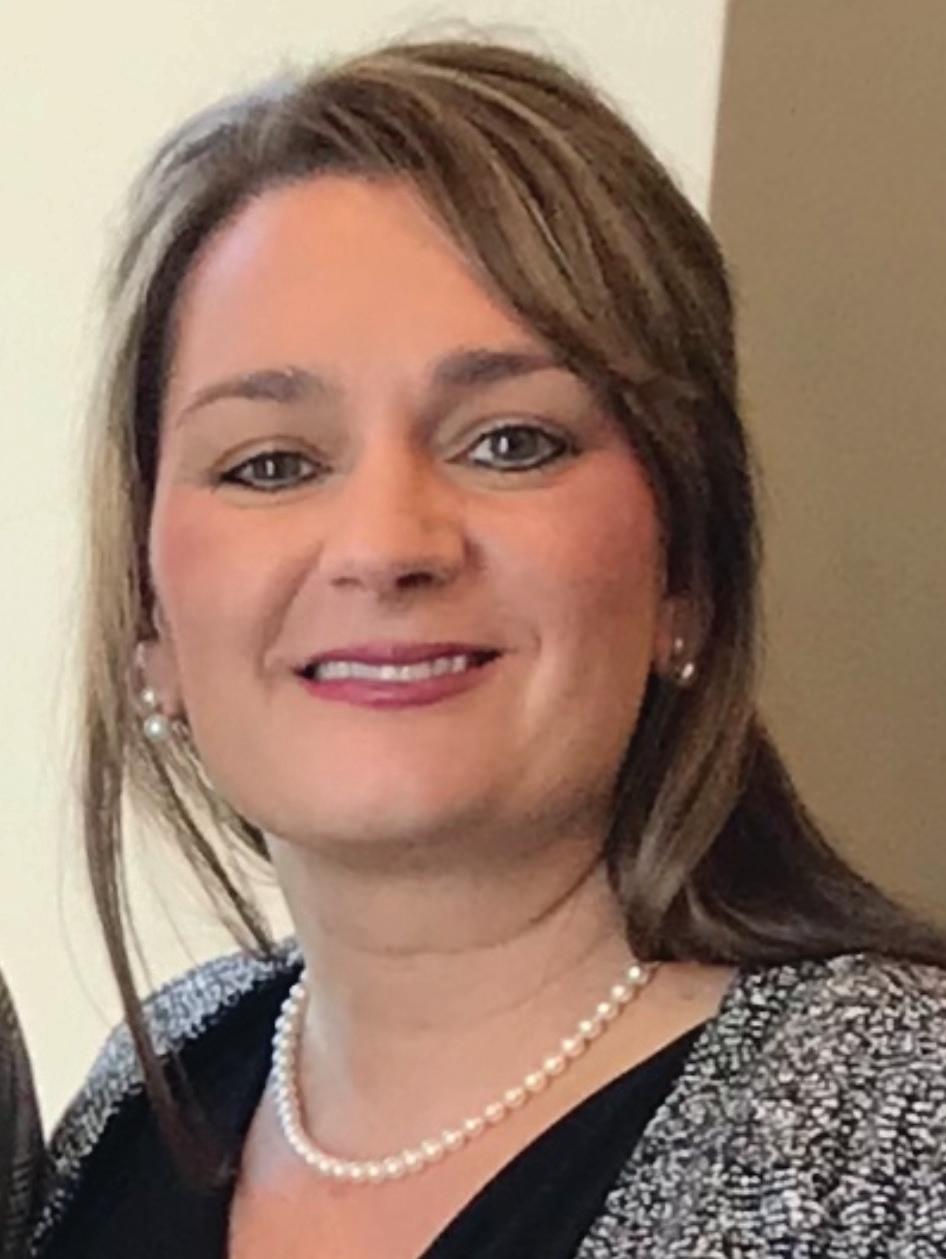
Twenty-six years later, she still feels grateful to be a part of the SMACNA “family” and work with highcalibrercontractors who complete life-changing projects and help families live their best lives by providing rewarding, high-paying jobs. Her role changes every day—a challenge and a blessing—and more than anything, she considers herself a servant leader.
“Because there are so many different aspects of this work, from labor negotiations and serving as a trustee on the benefit funds to planning meetings and social events, I get to use my experience and knowledge in a variety of areas,” she says. “Plus, it often presents opportunities to challenge me on different levels.”
Like most areas in North America, SMACNA Georgia is facing labor challenges, a task the association is addressing
Partners in Progress » January / February 2023 » 19
by making sure the potential sheet metal labor force in Georgia (and North Carolina, which Slaick also represents) feels represented and encouraged to become involved.


“The future generation should not see our trade as an afterthought or fall-back plan,” she says. “It is an excellent career and provides tremendous opportunities. For years, the pendulum swung to ʻcollege for everyone’ and that has been the focus for a long time.”
Over that timeframe, people seem to have forgotten about the skilled trades, she adds, and the stigma about blue collar work has grown but should be no more.
“We say we are the best kept secret, but we don’t want to be,” she says. “It is time to change the mindset.” A college graduate herself, Slaick believes students should learn about both college and the skilled trades as higher education options.

SMACNA Georgia started recruitment initiatives just three years ago after completing a strategic plan and identifying the need for engagement in the recruitment process. Now, in addition to the Local’s recruiting efforts, the association vets and filters resumes before sending potential candidates on to contractor members.
It also works with Local 85 on sponsorships, including the high school football kick-off to the season, which takes place as Mercedes-Benz stadium, built in part by SMACNA Georgia contractors. Joint recruitment initiatives include commercials about the sheet metal industry during breaks and co-sponsoring the Georgia High School Football Hall of Fame.
“We are trying to hit all aspects of appealing to the future generation,” she says. “Having a good relationship with our Local is essential to moving the industry forward. We know we’re not always going to agree, but our relationship allows us to discuss the issues and hear each other out. True collaboration is key to success.”
For those considering a career in sheet metal, Slaick’s advice is to be open because a career in sheet metal offers many opportunities, some of them unexpected. “You might think you are heading in one direction, but you never know what might come available,” she says. “Try to pair with someone who can pour into you, and then soak it all in.”
She says it is important to work hard, do your best, and appreciate the role you are in for what it can teach you about what might come next.
“But this isn’t really about me,” she concludes. “My real work and focus is how our association can truly support and best help our contractor members.” ▪
For free resources to help with your recruiting efforts, log in at pinp.org and checkout Recruiting under the Resources menu. An account is available to all members.
20 » Partners in Progress » www.pinp.org
My Journey: Ginger Slaick
Help Spread Awareness About Careers in Sheet Metal

GET THE SMART-SMACNA BRAND AMBASSADOR PROGRAM STARTED IN YOUR AREA

The SMART-SMACNA Best Practices Market Expansion Task Force has launched a recruitment initiative to help address the industry's labor shortage.
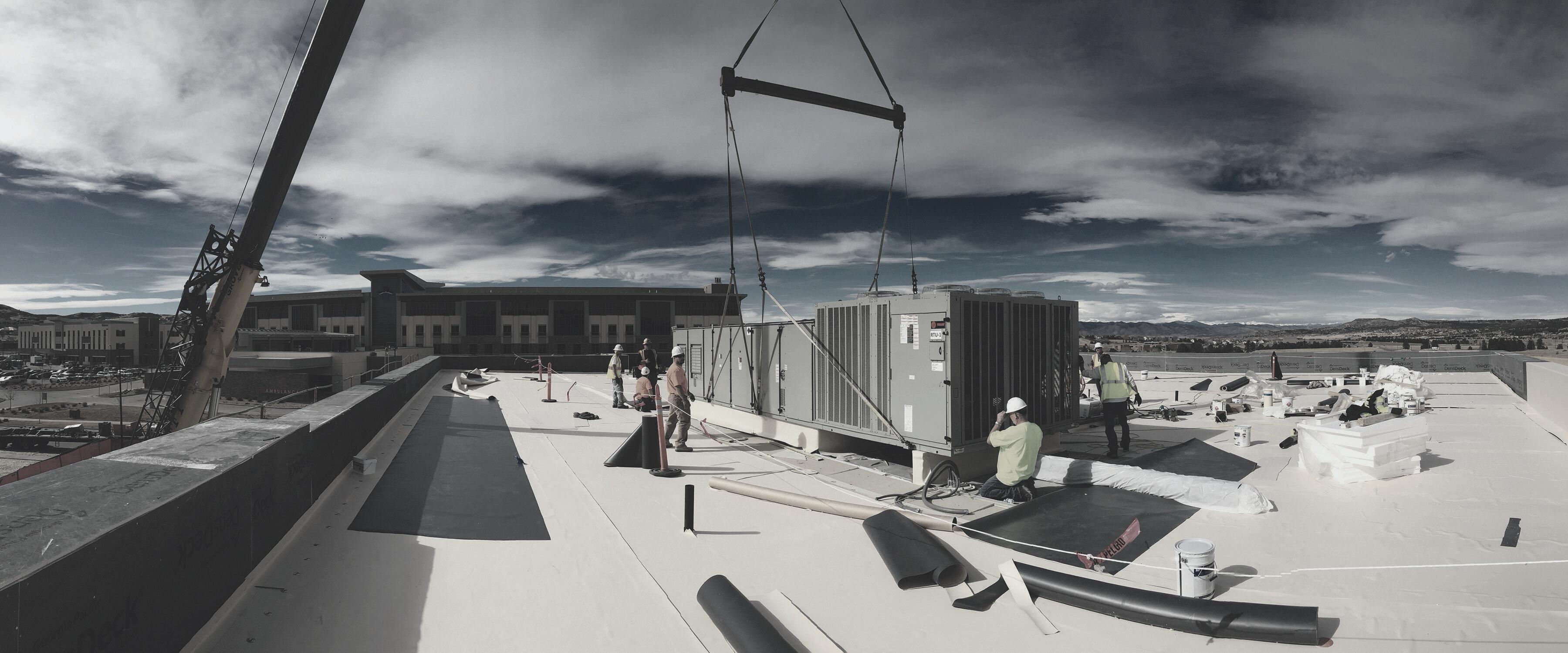
The Brand Ambassador program attracts new recruits to the sheet metal trade by leveraging the positive experiences of apprentices, journeypersons, and other members of the industry who love the trade.

Brand Ambassadors spread the word about the advantages of SMACNA and SMART careers to their friends and family on social media.
For more details on other recruiting resources visit pinp-materials.org
Anyone interested in being a Brand Ambassador simply uses the hashtag of our recruiting campaign, #MJMG, on their social media accounts. Exemplary Brand Ambassadors will receive $100 Amazon gift cards.

Industrial Athlete™
info@industrialathleteofficial.org @industrialathleteofficial @industrialathltofficial






 By / Natalie Bruckner
By / Natalie Bruckner





















 By / Sheralyn Beleau
By / Sheralyn Beleau






















